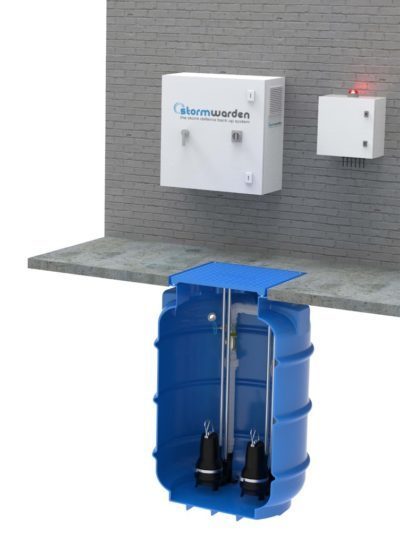It’s an unfortunate fact that basements are inherently prone to flooding. They occupy a space below ground level and closer to the water table – that is, the level at which groundwater naturally occurs. When it rains, the water table rises, and even with an adequate drainage system, sump pumps, and other preventative measures, water can easily find its way into your basement and cause problems. It is almost unavoidable that, at some point during the lifetime of your basement, it will experience some seepage, if not flooding. How much water gets in and how much damage it causes will depend on the individual circumstances of your basement – its structure, proximity to the water table, surrounding topography and climatic conditions – as well as how prepared you are and the measures you have in place to combat flooding. In this blog, we look at some of the ways to prevent flooding and reduce the risk of serious damage.
Drainage Systems
Before we begin talking about pumps or other specialised machinery, it needs to be said that having a well-designed, properly maintained drainage system that directs excess water away from your basement and your property is one of the best ways to prevent basement flooding. Roof gutters and downspouts should be kept in good repair and clear of leaves and other debris. They should drain the water at least six inches away from the building and ideally towards a downward slope to prevent it running back into the earth and straight into your basement. They should also not run into the sewer system, as this will have the same effect.
Sump and Stormwater Pump Systems
A sump pit and pump are another important method to reduce basement flooding. The sump pit is built below floor level in your basement. When the water table rises during heavy rain, a system of perforated drain pipes or ‘drain tiles’ that run parallel to the foundation of the structure drain water from the earth around the building’s foundation into the pit. The sides of the pit itself may also be perforated to allow direct drainage from the surrounding area.
When the water level in the sump pit rises, a submersible stormwater pump within the sump pit is activated and expels the water away from the foundation through a drainage pipe. This should deposit the water far away from the property and not back into the sewage system.
Use a Battery Backup for Your Pump
Power outages during storms are common, and this means that your stormwater pump could lose power when you need it most. For this reason, it is vital to have a backup generator of 120v or more that will not be affected by outages. The Aline StormWarden is a 240v backup power supply that features automatic cut-in power for when your mains power fails. The StormWarden system is ideal for use in basement carparks and wine cellars, workshops, garages, below-ground storage, and a range of other settings.
Contact Us for Your Storm Water Pump Solutions
Aline Pumps is Australia’s largest supplier of pumps and pumping systems for commercial and residential settings. To speak to one of our team about our submersible pumps, backup power systems, or any of our other products, contact us by phone or email today.





